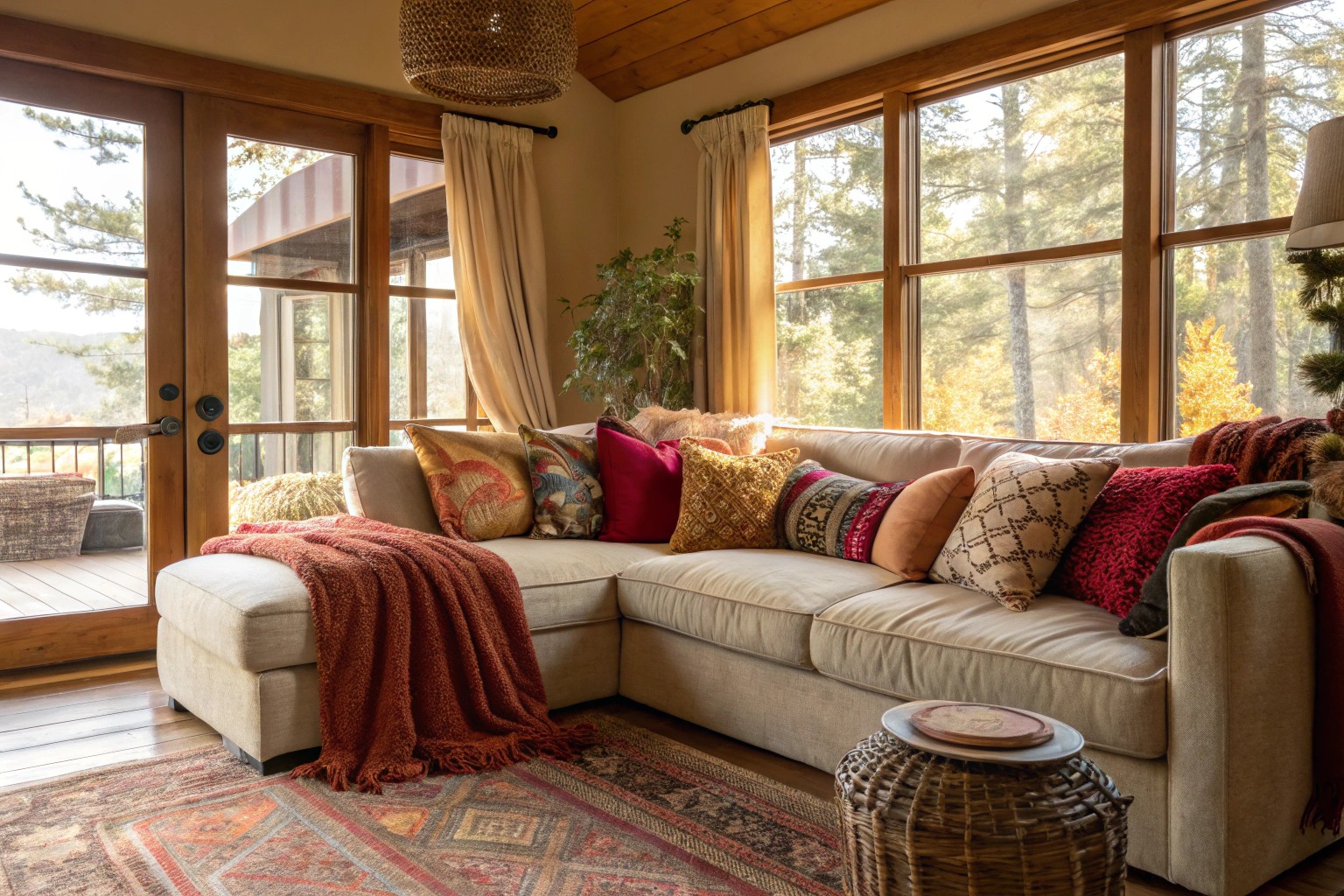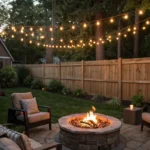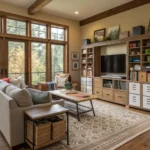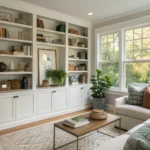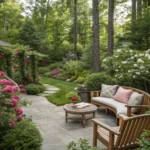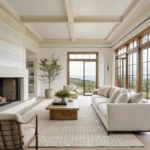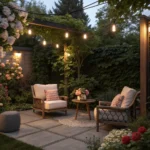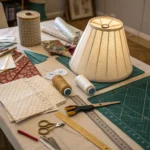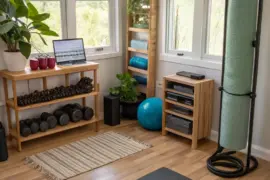The secret to successful seasonal decorating lies not in accumulating more items, but in thoughtfully reimagining what you already own. By mastering the art of strategic swapping, repurposing, and rearranging, you can transform your living spaces throughout the year while maintaining both budget consciousness and environmental responsibility.
The Foundation Philosophy: Less Stuff, More Impact
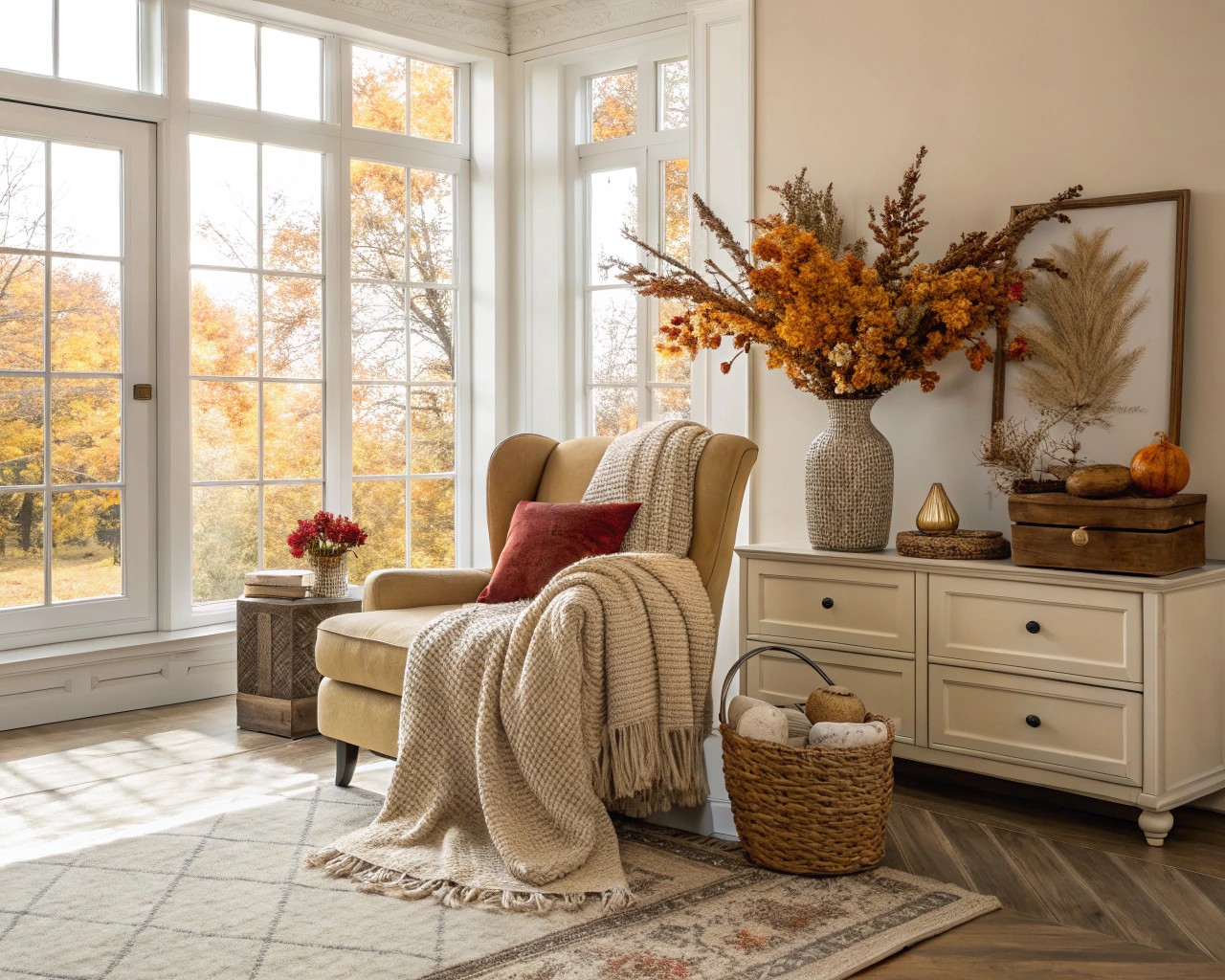
The most effective seasonal refreshes begin with a fundamental shift in perspective. Rather than viewing each season as an opportunity to purchase new decorative elements, successful home transformers adopt what design professionals call the “neutral foundation, seasonal accent” approach. This strategy involves maintaining larger, investment pieces in neutral tones while allowing smaller, easily changeable elements to carry the seasonal message.
The core principle revolves around the “one in, one out” rule. When introducing a seasonal element, something else must be temporarily stored or repurposed elsewhere. This practice prevents the accumulation of clutter while ensuring each seasonal change feels intentional and impactful. The approach also encourages a more mindful relationship with possessions, as each item must earn its place in the current seasonal display.
Building Your Seasonal Inventory
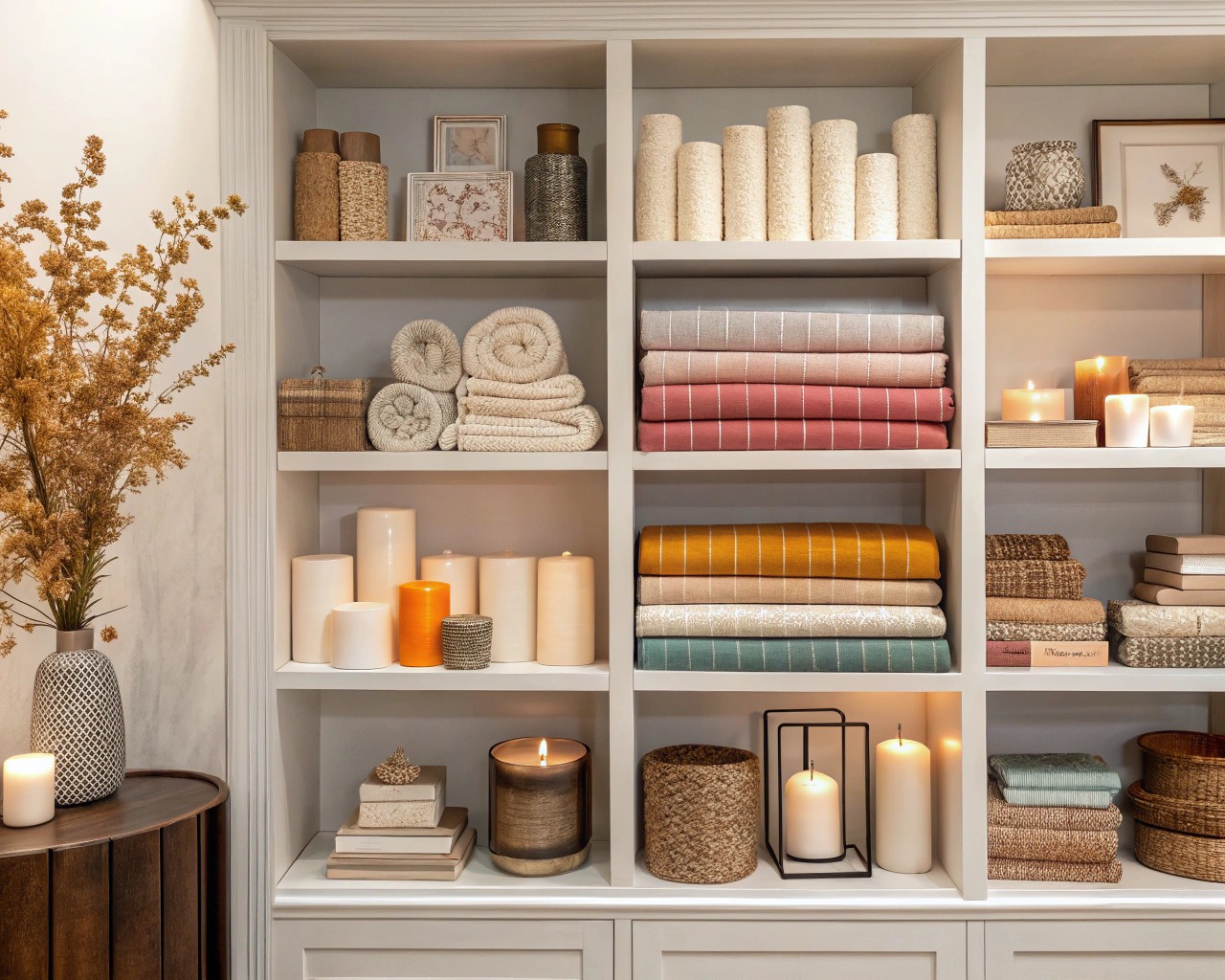
Begin by conducting a comprehensive audit of existing decorative elements throughout your home. Catalog items by color, texture, scale, and seasonal potential rather than their original intended use. A summer wicker basket might serve as a cozy autumn display vessel, while winter’s heavy wool throws can be repurposed as rustic table runners during cooler spring evenings.
Create a simple inventory system using three categories:
- Year-round foundations: Neutral furniture, artwork, and permanent fixtures
- Flexible elements: Items that can work across multiple seasons with slight modifications
- Seasonal specifics: Pieces with strong seasonal associations that require strategic storage
Strategic Textile Transformations
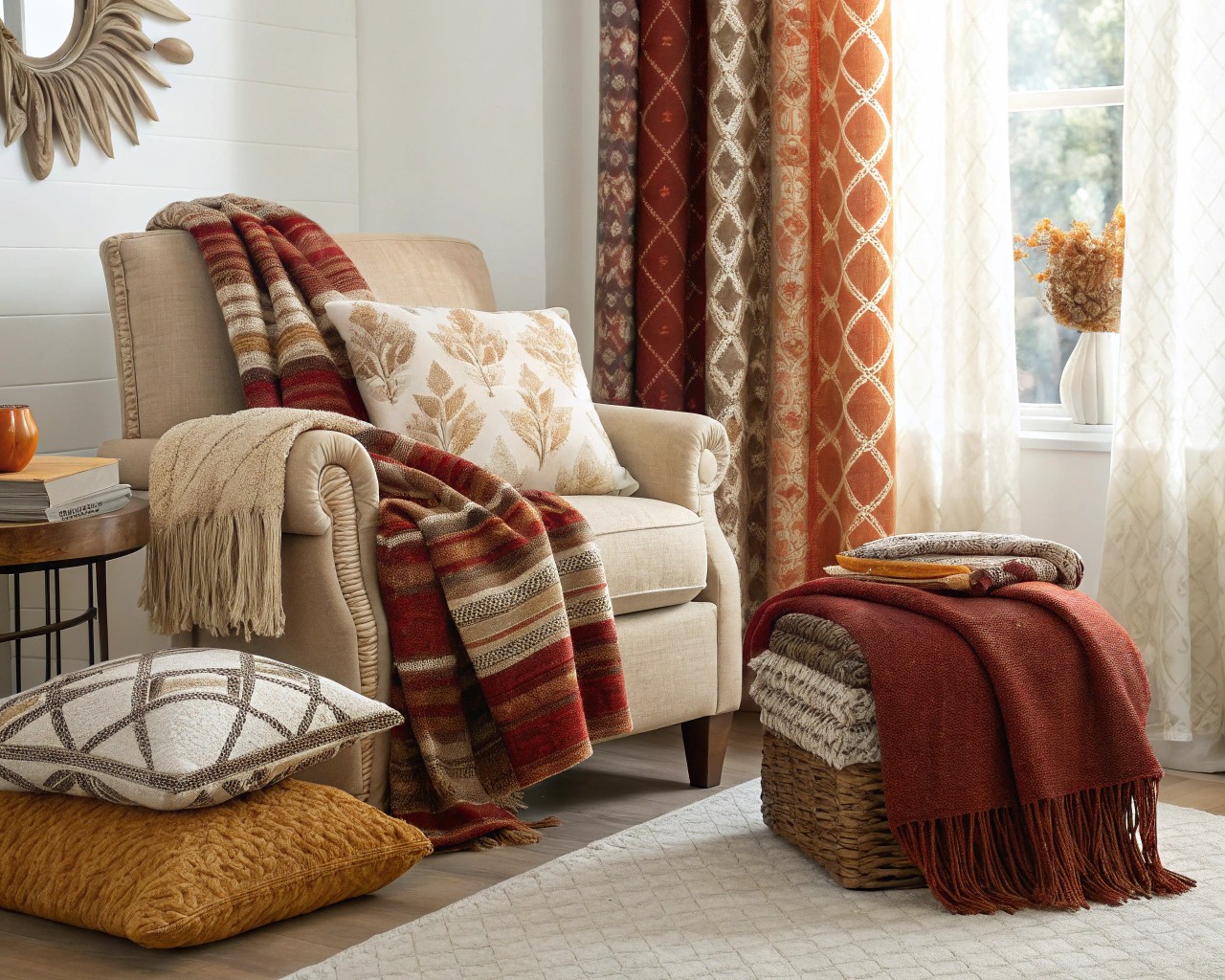
Fabrics represent the quickest and most cost-effective method for achieving dramatic seasonal transitions. The strategic manipulation of existing textiles can completely alter a room’s atmosphere without requiring additional purchases.
The Layering System
Professional designers rely heavily on textile layering to create seasonal depth and interest. During warmer months, remove heavy wool throws and velvet cushions, replacing them with existing linen pieces or cotton alternatives stored from previous seasons. The key lies in understanding fabric weight and texture associations—lightweight, flowing materials naturally evoke spring and summer, while heavier, textured fabrics suggest autumn and winter comfort.
Spring and Summer Swaps:
- Replace velvet or wool throw pillows with linen or cotton alternatives
- Swap heavy curtains for sheer panels or lightweight fabrics
- Use cotton table runners instead of heavier materials
- Layer lightweight throws at furniture edges instead of draping heavily
Autumn and Winter Transitions:
- Reintroduce wool and cashmere throws in rich, warm tones
- Switch to heavier curtain panels for improved insulation and coziness
- Add textured cushions in deeper colors
- Use table linens in warmer, more saturated hues
The Power of Pillow Cover Rotation
One of the most economical approaches to seasonal change involves investing in removable pillow covers that can transform existing cushion inserts. This strategy allows for dramatic color and pattern shifts while preserving the foundational pillow structure. Store off-season covers in decorative baskets or vintage trunks that serve dual purposes as both storage and display elements.
Natural Elements and Foraged Materials
Nature provides an abundant, cost-free source of seasonal decorating materials that can be ethically foraged from your own property or public spaces where permitted. The integration of natural elements connects interior spaces with the changing outdoor environment while providing authentic seasonal markers.
Branch and Foliage Arrangements

Tree branches represent one of the most versatile natural decorating elements available. Their application varies dramatically based on species, season, and preparation method. During spring, flowering branches like cherry blossoms, dogwood, and forsythia can be cut and forced indoors to create dramatic early-season displays. Summer arrangements might feature leafy branches from maple, birch, or oak trees, while autumn brings opportunities for colorful foliage collection.
Seasonal Branch Selection Guide:
- Spring: Flowering branches (cherry, apple, forsythia), early leafing varieties (willow, birch)
- Summer: Full leafy branches, interesting bark textures (birch, sycamore)
- Autumn: Colorful foliage (maple, oak, sweetgum), seed pods, interesting fruit branches
- Winter: Bare sculptural branches, evergreen boughs, branches with interesting bark patterns
Maintenance and Preparation Techniques
Proper branch preparation extends display life and maintains visual appeal. Fresh branches require stem trimming and hammer-smashing of cut edges to improve water absorption. Change water regularly and trim stems every few days to prevent bacterial growth. When branches begin to decline, they can be repurposed as dried elements or composted to complete the natural cycle.
Container Garden Seasonal Swaps
Container plantings offer exceptional flexibility for seasonal transitions, particularly when designed with a permanent centerpiece plant surrounded by changeable seasonal elements. The strategy involves selecting a year-round anchor plant—typically an evergreen shrub, ornamental grass, or small tree—then swapping out surrounding annuals and accent plants as seasons change.
The Evergreen Foundation System:
1. Select a appropriately sized evergreen anchor (boxwood, dwarf conifer, or ornamental grass)
2. Plant in the container’s center or slightly off-center for visual interest
3. Surround with seasonal plantings that can be easily removed and replanted
4. Use the same containers year-round while changing only the surrounding plantings
This approach reduces both cost and labor while ensuring containers always appear thoughtfully designed. Seasonal plant material can often be sourced from other areas of the garden, further reducing expenses while creating cohesive landscape connections.
Room-by-Room Refresh Strategies
Different spaces within the home present unique opportunities and challenges for seasonal transformation. Understanding how to maximize impact in each area while working within existing constraints requires a systematic approach.
Living Spaces: The Art of Rearrangement
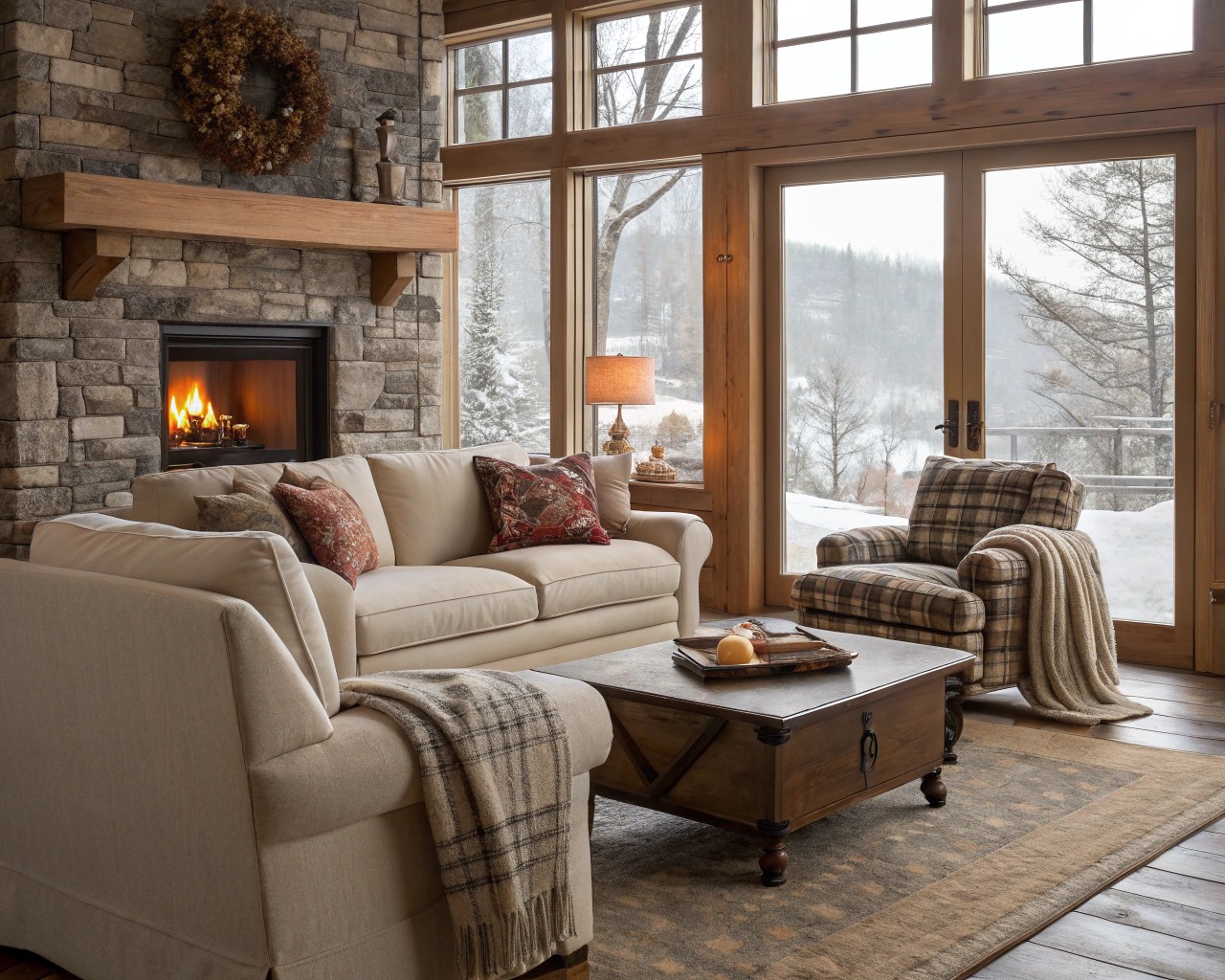
Living rooms and family spaces benefit enormously from periodic furniture rearrangement that responds to seasonal light patterns and usage preferences. During summer months, position seating to take advantage of cooling cross-breezes and evening light. Winter arrangements might prioritize proximity to heat sources and cozy conversation groupings.
Seasonal Furniture Positioning:
- Summer: Open arrangements that promote air circulation, seating positioned away from heat-generating electronics
- Winter: Intimate groupings around heat sources, furniture arranged to capture and retain warmth
- Spring/Autumn: Transitional arrangements that can be easily adjusted as weather patterns change
The strategic use of area rugs can define seasonal spaces without moving heavy furniture. Light-colored, smaller rugs expand visual space during warmer months, while darker, larger rugs create cozy boundaries during colder seasons.
Dining Areas: Tablescape Transformations
Dining surfaces provide ideal canvases for seasonal expression through the strategic layering of existing table linens, serving pieces, and decorative objects. The key lies in creating what designers call “transitional vignettes”—carefully composed groupings that can be easily modified by swapping individual elements.
Core Vignette Elements:
- Height variation: Achieved through books, risers, or varied container sizes
- Texture contrast: Mixing smooth and rough surfaces, matte and glossy finishes
- Organic elements: Fresh or dried plant materials, natural objects
- Light sources: Candles, lanterns, or small lamps for evening ambiance
- Seasonal markers: Subtle references to current season through color or natural materials
Window Treatment Adaptations
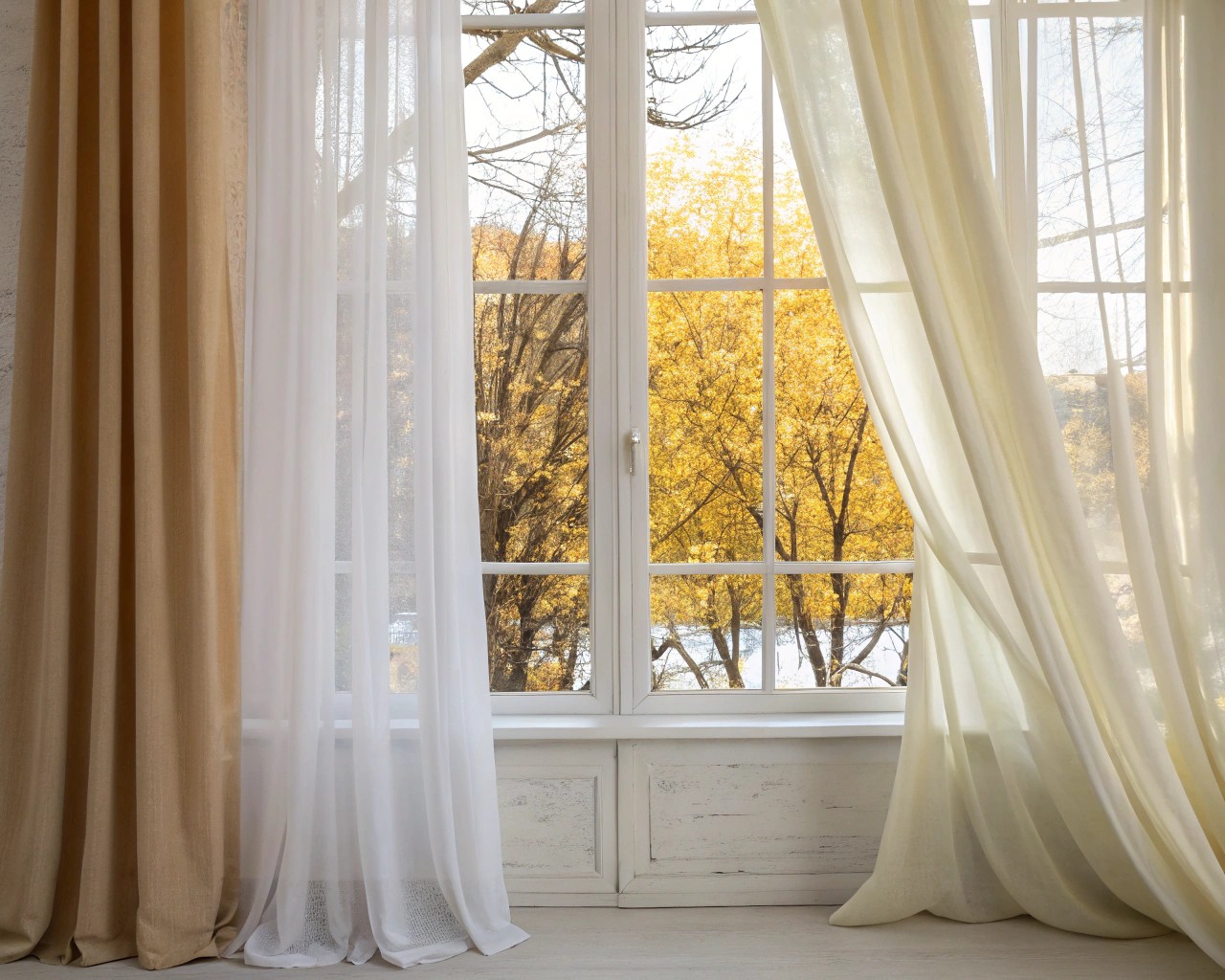
Windows represent significant opportunities for seasonal energy efficiency improvements alongside aesthetic changes. The strategic swapping of window treatments can dramatically alter both the visual weight of a room and its thermal performance. Heavy, insulating treatments during winter months can be replaced with lighter, more transparent options that celebrate increased daylight during spring and summer.
Rather than purchasing new treatments for each season, consider layering systems that allow for partial coverage adjustments. Sheer panels can remain constant while heavier drapes are added or removed based on seasonal needs. This approach maintains privacy and light control flexibility while responding to changing thermal requirements.
Storage Solutions That Double as Decor
Effective seasonal decorating requires thoughtful storage systems that prevent accumulation of clutter while keeping off-season items easily accessible. The most successful storage solutions serve dual purposes, functioning as decorative elements while concealing seasonal items awaiting their next display opportunity.
Decorative Storage Integration
Vintage trunks, woven baskets, and wooden crates can house off-season textiles, small decorative objects, and natural materials while contributing to the room’s current aesthetic. These storage pieces should be selected based on their ability to complement multiple seasonal looks rather than being tied to specific decorative themes.
Multi-Functional Storage Ideas:
- Ottoman storage that provides seating and textile storage
- Decorative ladder shelving for displaying current season items while storing others
- Under-stair storage disguised as built-in cabinetry
- Bedroom benches with interior storage for off-season bedding and pillows
The Rotation System
Establish a practical rotation schedule that prevents storage areas from becoming overwhelming while ensuring seasonal transitions happen smoothly. Many successful seasonal decorators operate on a three-month rotation cycle, with major changes occurring at the beginning of each season and minor adjustments happening monthly.
Create a simple tracking system that records where specific items are stored and when they were last used. This prevents the accumulation of forgotten decorative elements and ensures that each piece continues to serve a purpose in the seasonal rotation cycle.
Advanced Techniques: Repurposing and Creative Adaptation
The most sophisticated seasonal decorators develop skills in seeing potential uses for objects beyond their original intended purpose. This ability to reimagine familiar items creates unique decorative solutions while maximizing the utility of existing possessions.
Structural Repurposing
Furniture pieces and architectural elements can often be adapted for new seasonal functions through creative reimagining. A vintage ladder might serve as a rustic display shelf during autumn, a towel rack during summer, or a string light support structure during winter holiday seasons. The key lies in identifying the essential structural qualities of objects—their lines, proportions, and physical capabilities—rather than limiting them to conventional uses.
Seasonal Color Migration
Colors naturally associated with specific seasons can be strategically deployed throughout the home by moving existing objects to new locations. A collection of blue and white ceramics might migrate from kitchen display to living room prominence during summer months, while warm amber and rust-colored pieces take center stage during autumn. This migration strategy requires no additional purchases while creating distinctly different seasonal atmospheres.
Color Psychology Applications:
- Cool colors (blues, greens, purples): Promote feelings of calm and spaciousness, ideal for summer displays
- Warm colors (reds, oranges, yellows): Create cozy, intimate feelings appropriate for autumn and winter
- Neutral colors (whites, beiges, grays): Provide flexible foundations that support seasonal accent colors
Maintenance and Sustainability Practices
Successful seasonal decorating without constant purchasing requires attention to the longevity and care of existing decorative elements. Proper maintenance extends the useful life of seasonal items while ensuring they continue to contribute positively to interior environments.
Natural Material Care
Foraged and natural decorating materials require specific care techniques to maintain their appearance and prevent pest introduction. Branches should be inspected for insects before bringing indoors, and dried materials should be stored in breathable containers that prevent moisture accumulation and mold development.
Regular rotation of natural materials prevents over-harvesting from any single source while allowing for ecosystem recovery. Establish sustainable collection practices that take only what is abundant and avoid disturbing wildlife habitats or protected plant communities.
Textile Maintenance Systems
Seasonal textiles require proper cleaning and storage to maintain their appearance and functionality across multiple years of use. Natural fiber items benefit from professional cleaning before long-term storage, while synthetic materials can often be maintained through careful home washing and drying procedures.
Store textiles in breathable containers with natural pest deterrents like cedar blocks or lavender sachets. Avoid plastic storage bags that can trap moisture and promote mold growth, particularly in humid climates.
Creating Year-Round Flexibility
The ultimate goal of seasonal decorating without constant purchasing lies in creating systems that respond gracefully to changing seasons while maintaining the home’s essential character and functionality. This requires developing an understanding of which elements should remain constant and which should be allowed to change.
The 80/20 Rule
Professional designers often apply an 80/20 ratio to seasonal decorating: 80% of decorative elements remain constant throughout the year, while 20% change seasonally. This approach ensures that homes maintain their fundamental character while still responding to seasonal rhythms and changing light patterns.
The constant 80% typically includes major furniture pieces, artwork, built-in elements, and foundational color schemes. The changing 20% encompasses easily moved objects, textiles, natural materials, and small accent pieces that can be swapped, stored, or repurposed as seasons change.
Long-term Planning Strategies
Develop a long-term vision for how seasonal changes will evolve over multiple years. This might involve gradually building collections of versatile decorative objects that can serve multiple seasonal functions, or slowly replacing worn items with more adaptable alternatives that support the seasonal rotation system.
Consider the changing needs of household members and how seasonal decorating practices might need to adapt over time. Young families might prioritize durable, easily cleaned seasonal elements, while empty nesters might have more time and space for delicate or high-maintenance seasonal displays.
The most successful approach to seasonal decorating without constant purchasing combines practical organizational systems with creative problem-solving skills and a deep appreciation for the natural rhythms that connect interior spaces with the changing world outside. By mastering these techniques, you create homes that feel fresh and responsive throughout the year while maintaining financial responsibility and environmental consciousness.

